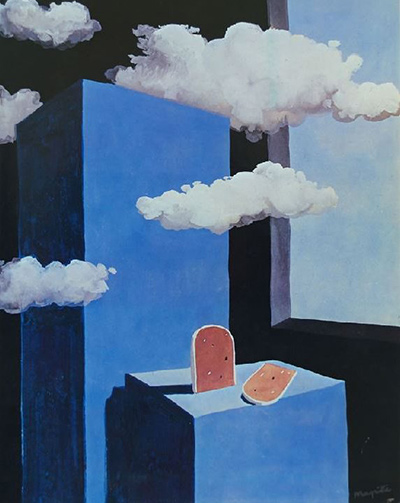Rene Magritte had an influential part in shaping pop culture. His minimalist paintings combined different elements in a way that it created images that challenged the observer’s preconditioned view of normal objects.
The witty paintings that were made in his lifetime were indicative of the surrealist style that was gaining ground in the art world at the time. Born 21 November 1898 and died 15 August 1967, Magritte was a man ahead of his time.
He became involved with the surrealist movement after receiving negative criticism at one of his first exhibitions in Brussels, Belgium. He befriended Andre Breton after he moved to Paris following the exhibition and became a leader of the surrealist movement that was gaining traction at the time.
In his The Poetic World painting, he took on a somewhat realist approach. All of the objects in the piece – the window, clouds, sky, block, door and the slices of pate – were completed with the realistic style of art, similar to the work of Diego Velazquez. The only real distortion in the painting can be found in the relationship between the individual images, the space they are placed in and their proportions to one another.
The entire image is located inside, framed by the opening to the blue sky outside even though the clouds make one think of the outside. The combination of the objects that are meant to be outside with the appearance of being inside transform the image as a whole through the light and space created in the viewer’s imagination. Tension and clarity is created with the cleaver use of white, blue and deep grey, creating a sublime light.
The popularity of Magritte’s work rose in the 1960s as it had an influence on many of the artistic themes of the time, including conceptual art. He was recognised for his work by coming 18th in the Flemish version of The Greatest Belgian and 9th in the Walloon version.




